Introduction
Large-cap stocks represent established companies with strong market influence and financial stability, making them a cornerstone of many investment portfolios. Their significance in financial markets lies in their ability to drive economic growth, shape industry trends, and offer investors steady returns with lower volatility compared to smaller stocks. In 2025, understanding the outlook for large-cap stocks is crucial for investors seeking to navigate market shifts, capitalize on emerging opportunities, and manage potential risks. Evaluating key trends, sector performance, and investment strategies will help investors make informed decisions to optimize portfolio growth in the evolving economic landscape.
Key Market Trends Influencing Large-Cap Stocks in 2025
Large-cap stocks in 2025 are expected to be influenced by key economic indicators, including GDP growth, employment rates, and consumer spending trends. The U.S. economy is projected to maintain moderate growth, supported by a resilient labor market and steady consumer demand. Inflation is anticipated to stabilize within the 2%–3% range, reducing uncertainty for investors. Corporate earnings remain a crucial factor, with companies focusing on cost efficiency and revenue expansion to sustain profitability. Firms such as Microsoft MSFT and Apple AAPL are positioned to benefit from stable economic conditions, reinforcing their market leadership.
The Federal Reserve is expected to slow the pace of rate cuts, targeting a range between 3.5% and 4%. Lower borrowing costs could support corporate investments and expansion, benefiting sectors such as technology and healthcare. Investors will closely monitor monetary policy decisions to assess their impact on stock valuations. Companies like JPMorgan Chase JPM and Johnson & Johnson JNJ may experience favorable conditions due to stable interest rates and strong financial fundamentals. Corporate earnings projections indicate steady growth across multiple industries, with technology and consumer discretionary sectors leading the way. Large-cap companies are expected to focus on innovation, operational efficiency, and strategic acquisitions to drive profitability. The outlook for 2025 suggests that firms with diversified revenue streams and strong balance sheets will outperform market expectations.
Sources
Edward Jones
Fifth Third Bank
First Command
Sector Performance and Growth Opportunities
Technology, healthcare, and financial services are expected to drive large-cap stock performance in 2025. The technology sector continues to benefit from advancements in artificial intelligence, cloud computing, and semiconductor innovation. Companies like Microsoft MSFT and NVIDIA NVDA are positioned for growth due to increasing demand for AI-driven solutions and high-performance computing. Healthcare stocks are also gaining momentum, with biopharmaceutical firms focusing on breakthrough treatments in immunology and oncology. Firms such as Johnson & Johnson JNJ and AbbVie ABBV are leveraging innovation to expand their market presence.
Financial services remain a key sector for large-cap investments, with banks and asset management firms adapting to evolving economic conditions. Stable interest rates and strong consumer spending are expected to support financial institutions like JPMorgan Chase JPM and Goldman Sachs GS. The sector is also witnessing growth in fintech and digital banking, with companies integrating AI-driven financial solutions to enhance customer engagement and operational efficiency. The push for sustainability is driving interest in clean energy stocks, with firms like NextEra Energy NEE expanding their renewable energy portfolios. Biotechnology companies are advancing precision medicine and AI-assisted drug discovery, creating new opportunities for investors.
Sources
Fidelity
Morningstar
U.S. Bank
Investment Strategies for Large-Cap Stocks in 2025
Long-term investment strategies for large-cap stocks in 2025 focus on stability, compounding returns, and sector resilience. Large-cap stocks such as Microsoft MSFT and Johnson & Johnson JNJ are often included in long-term portfolios due to their ability to withstand economic fluctuations. Short-term strategies, on the other hand, capitalize on market trends, earnings reports, and sector rotations. Traders may focus on high-growth stocks with momentum-driven price movements, adjusting positions based on quarterly performance and macroeconomic shifts.
Investors employ diversification strategies to mitigate sector-specific risks, balancing exposure across industries such as technology, healthcare, and financial services. Companies like JPMorgan Chase JPM and Alphabet GOOGL provide stability through diversified revenue streams and strong balance sheets. Portfolio rebalancing and hedging techniques further enhance risk control.
Sources
Morgan Stanley
Morningstar
BlackRock
Will large-cap stocks perform well in 2025?
Large-cap stocks are projected to maintain strong performance in 2025, driven by stable economic conditions and corporate earnings growth. Companies with diversified revenue streams and market leadership, such as Microsoft MSFT and Apple AAPL, are expected to benefit from continued innovation and consumer demand. The Federal Reserve’s monetary policy and inflation trends will influence stock valuations, impacting investor sentiment. Technology and healthcare sectors remain key drivers of growth, with firms adapting to evolving market dynamics. Investors should prioritize diversification to mitigate risks associated with sector-specific fluctuations. Monitoring macroeconomic indicators and industry trends will be crucial for optimizing portfolio returns. Strategic investment in large-cap stocks can provide stability and long-term appreciation.
Sources
Federated Hermes
CFA Institute
EBC
Comparing Large-Cap Stocks with Other Investment Options
Large-cap companies, typically valued at over $10 billion, offer lower volatility and consistent returns, making them ideal for conservative investors. Mid-cap stocks, ranging between $2 billion and $10 billion, provide a balance between stability and growth, often outperforming large-cap stocks during economic expansions. Small-cap stocks, valued below $2 billion, carry higher risk but present significant growth opportunities. Active management involves fund managers selecting stocks based on research and market trends, aiming to outperform benchmarks. Passive investing, on the other hand, tracks indices like the S&P 500, offering lower costs and broad market exposure. While actively managed funds may outperform in certain conditions, passive funds provide consistent returns with minimal expenses, making them attractive for long-term investors. Active management allows for strategic stock selection, but passive investing ensures cost efficiency and diversification.
Sources
InvestingBrokers
SmartAsset
CFA Institute
Potential Risks and Market Volatility
Large-cap stocks in 2025 face potential risks from economic downturns and geopolitical influences. Global conflicts, trade policies, and inflationary pressures can impact investor sentiment and stock valuations. The Federal Reserve’s monetary policy decisions, particularly regarding interest rates, will play a crucial role in shaping market stability. Companies with strong balance sheets and diversified revenue streams, such as Johnson & Johnson JNJ and JPMorgan Chase JPM, may demonstrate resilience amid economic uncertainties. Sector-specific risks also influence large-cap stock performance, particularly in industries sensitive to regulatory changes and market disruptions.
Technology stocks, for example, may experience volatility due to shifts in data privacy laws and AI regulations. Healthcare companies face uncertainties related to drug pricing policies and government healthcare reforms. Financial services firms must navigate interest rate fluctuations and evolving consumer banking trends. Investors should implement risk management strategies to safeguard their portfolios against market volatility. Hedging techniques, such as options trading and fixed-income allocations, can provide stability during economic downturns. Maintaining a diversified investment approach across sectors and asset classes enhances resilience against unpredictable market shifts.
Sources
CFRA Research
Morgan Stanley
BBH
Conclusion
The outlook for large-cap stocks in 2025 remains promising, with strong corporate earnings, stable economic conditions, and continued innovation driving market growth. Investors can leverage diversification strategies and risk management techniques to navigate potential challenges such as economic fluctuations and sector-specific volatility. Key industries, including technology, healthcare, and financial services, are expected to lead in performance, providing long-term investment opportunities. Understanding macroeconomic trends and adjusting portfolios accordingly will be essential for optimizing returns. A well-balanced approach, combining active and passive investment strategies, ensures stability and growth in evolving market conditions.
📌Read More About:
The Top Large Cap Stocks- https://stockbossup.com/pages/topics/large-cap
What Are Large US Cap Stocks?- https://www.stockbossup.com/pages/post/38590/what-are-large-us-cap-stocks
Should I Only Invest in Large-Cap?- https://stockbossup.com/pages/post/38619/should-i-invest-in-large-cap-or-mid-cap
How Much of Your Portfolio Should be a Large-Cap?- https://stockbossup.com/pages/post/38620/how-much-of-your-portfolio-should-be-a-large-cap




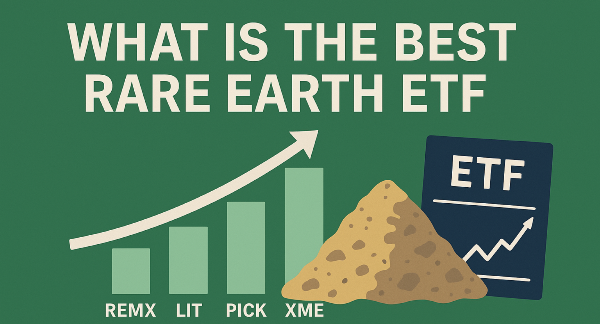
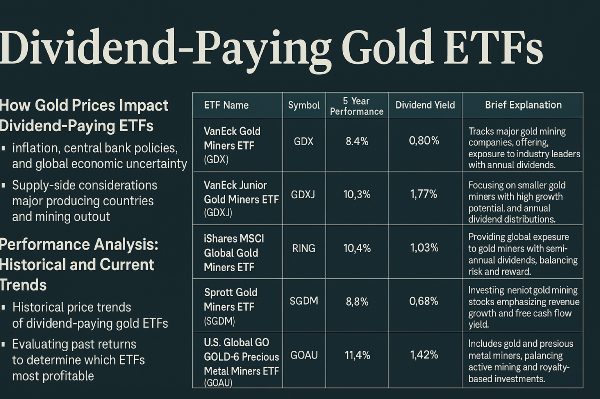

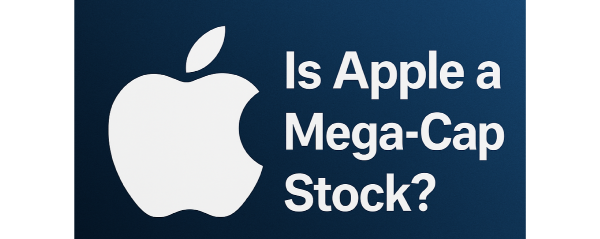

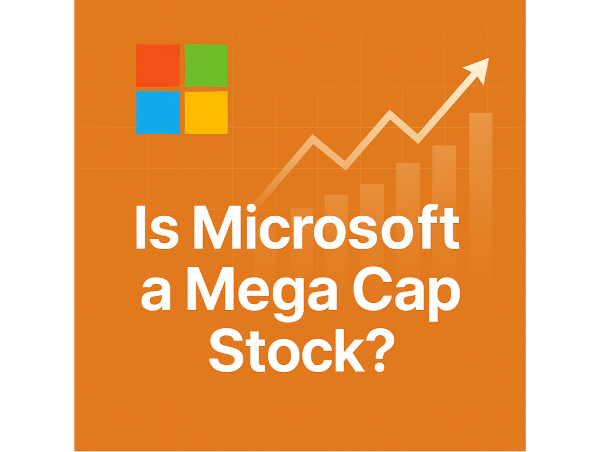

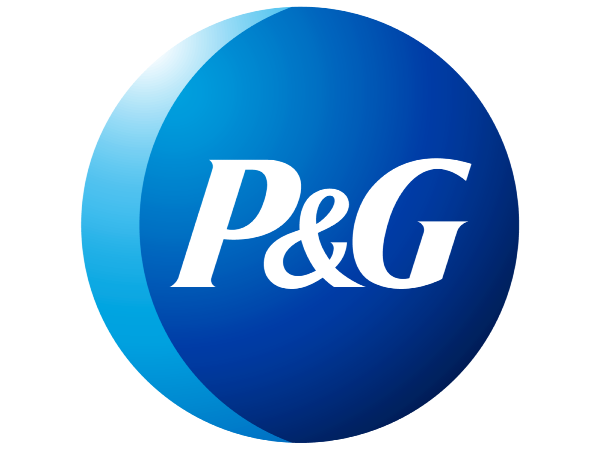


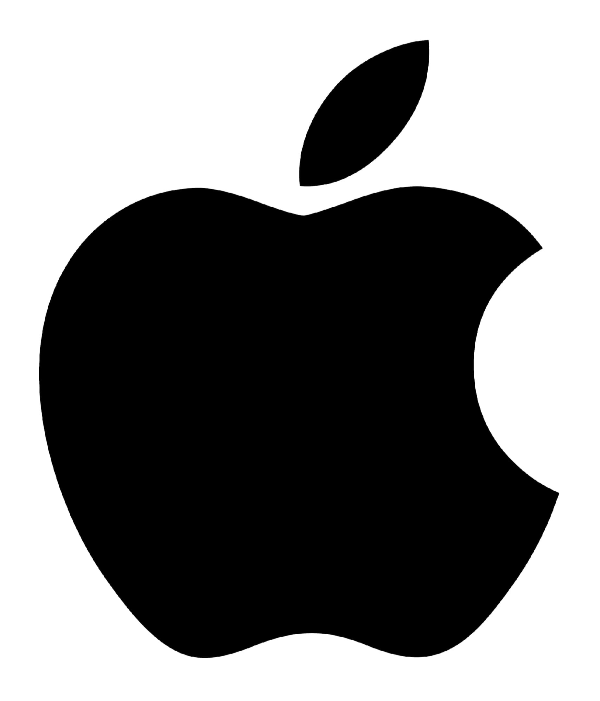













Introduction
Large-cap stocks represent established companies with strong market influence and financial stability, making them a cornerstone of many investment portfolios. Their significance in financial markets lies in their ability to drive economic growth, shape industry trends, and offer investors steady returns with lower volatility compared to smaller stocks. In 2025, understanding the outlook for large-cap stocks is crucial for investors seeking to navigate market shifts, capitalize on emerging opportunities, and manage potential risks. Evaluating key trends, sector performance, and investment strategies will help investors make informed decisions to optimize portfolio growth in the evolving economic landscape.
Key Market Trends Influencing Large-Cap Stocks in 2025
Large-cap stocks in 2025 are expected to be influenced by key economic indicators, including GDP growth, employment rates, and consumer spending trends. The U.S. economy is projected to maintain moderate growth, supported by a resilient labor market and steady consumer demand. Inflation is anticipated to stabilize within the 2%–3% range, reducing uncertainty for investors. Corporate earnings remain a crucial factor, with companies focusing on cost efficiency and revenue expansion to sustain profitability. Firms such as Microsoft MSFT and Apple AAPL are positioned to benefit from stable economic conditions, reinforcing their market leadership.
The Federal Reserve is expected to slow the pace of rate cuts, targeting a range between 3.5% and 4%. Lower borrowing costs could support corporate investments and expansion, benefiting sectors such as technology and healthcare. Investors will closely monitor monetary policy decisions to assess their impact on stock valuations. Companies like JPMorgan Chase JPM and Johnson & Johnson JNJ may experience favorable conditions due to stable interest rates and strong financial fundamentals. Corporate earnings projections indicate steady growth across multiple industries, with technology and consumer discretionary sectors leading the way. Large-cap companies are expected to focus on innovation, operational efficiency, and strategic acquisitions to drive profitability. The outlook for 2025 suggests that firms with diversified revenue streams and strong balance sheets will outperform market expectations.
Sources
Edward Jones
Fifth Third Bank
First Command
Sector Performance and Growth Opportunities
Technology, healthcare, and financial services are expected to drive large-cap stock performance in 2025. The technology sector continues to benefit from advancements in artificial intelligence, cloud computing, and semiconductor innovation. Companies like Microsoft MSFT and NVIDIA NVDA are positioned for growth due to increasing demand for AI-driven solutions and high-performance computing. Healthcare stocks are also gaining momentum, with biopharmaceutical firms focusing on breakthrough treatments in immunology and oncology. Firms such as Johnson & Johnson JNJ and AbbVie ABBV are leveraging innovation to expand their market presence.
Financial services remain a key sector for large-cap investments, with banks and asset management firms adapting to evolving economic conditions. Stable interest rates and strong consumer spending are expected to support financial institutions like JPMorgan Chase JPM and Goldman Sachs GS. The sector is also witnessing growth in fintech and digital banking, with companies integrating AI-driven financial solutions to enhance customer engagement and operational efficiency. The push for sustainability is driving interest in clean energy stocks, with firms like NextEra Energy NEE expanding their renewable energy portfolios. Biotechnology companies are advancing precision medicine and AI-assisted drug discovery, creating new opportunities for investors.
Sources
Fidelity
Morningstar
U.S. Bank
Investment Strategies for Large-Cap Stocks in 2025
Long-term investment strategies for large-cap stocks in 2025 focus on stability, compounding returns, and sector resilience. Large-cap stocks such as Microsoft MSFT and Johnson & Johnson JNJ are often included in long-term portfolios due to their ability to withstand economic fluctuations. Short-term strategies, on the other hand, capitalize on market trends, earnings reports, and sector rotations. Traders may focus on high-growth stocks with momentum-driven price movements, adjusting positions based on quarterly performance and macroeconomic shifts.
Investors employ diversification strategies to mitigate sector-specific risks, balancing exposure across industries such as technology, healthcare, and financial services. Companies like JPMorgan Chase JPM and Alphabet GOOGL provide stability through diversified revenue streams and strong balance sheets. Portfolio rebalancing and hedging techniques further enhance risk control.
Sources
Morgan Stanley
Morningstar
BlackRock
Sources
Federated Hermes
CFA Institute
EBC
Comparing Large-Cap Stocks with Other Investment Options
Large-cap companies, typically valued at over $10 billion, offer lower volatility and consistent returns, making them ideal for conservative investors. Mid-cap stocks, ranging between $2 billion and $10 billion, provide a balance between stability and growth, often outperforming large-cap stocks during economic expansions. Small-cap stocks, valued below $2 billion, carry higher risk but present significant growth opportunities. Active management involves fund managers selecting stocks based on research and market trends, aiming to outperform benchmarks. Passive investing, on the other hand, tracks indices like the S&P 500, offering lower costs and broad market exposure. While actively managed funds may outperform in certain conditions, passive funds provide consistent returns with minimal expenses, making them attractive for long-term investors. Active management allows for strategic stock selection, but passive investing ensures cost efficiency and diversification.
Sources
InvestingBrokers
SmartAsset
CFA Institute
Potential Risks and Market Volatility
Large-cap stocks in 2025 face potential risks from economic downturns and geopolitical influences. Global conflicts, trade policies, and inflationary pressures can impact investor sentiment and stock valuations. The Federal Reserve’s monetary policy decisions, particularly regarding interest rates, will play a crucial role in shaping market stability. Companies with strong balance sheets and diversified revenue streams, such as Johnson & Johnson JNJ and JPMorgan Chase JPM, may demonstrate resilience amid economic uncertainties. Sector-specific risks also influence large-cap stock performance, particularly in industries sensitive to regulatory changes and market disruptions.
Technology stocks, for example, may experience volatility due to shifts in data privacy laws and AI regulations. Healthcare companies face uncertainties related to drug pricing policies and government healthcare reforms. Financial services firms must navigate interest rate fluctuations and evolving consumer banking trends. Investors should implement risk management strategies to safeguard their portfolios against market volatility. Hedging techniques, such as options trading and fixed-income allocations, can provide stability during economic downturns. Maintaining a diversified investment approach across sectors and asset classes enhances resilience against unpredictable market shifts.
Sources
CFRA Research
Morgan Stanley
BBH
Conclusion
The outlook for large-cap stocks in 2025 remains promising, with strong corporate earnings, stable economic conditions, and continued innovation driving market growth. Investors can leverage diversification strategies and risk management techniques to navigate potential challenges such as economic fluctuations and sector-specific volatility. Key industries, including technology, healthcare, and financial services, are expected to lead in performance, providing long-term investment opportunities. Understanding macroeconomic trends and adjusting portfolios accordingly will be essential for optimizing returns. A well-balanced approach, combining active and passive investment strategies, ensures stability and growth in evolving market conditions.
📌Read More About:
The Top Large Cap Stocks- https://stockbossup.com/pages/topics/large-cap
What Are Large US Cap Stocks?- https://www.stockbossup.com/pages/post/38590/what-are-large-us-cap-stocks
Should I Only Invest in Large-Cap?- https://stockbossup.com/pages/post/38619/should-i-invest-in-large-cap-or-mid-cap
How Much of Your Portfolio Should be a Large-Cap?- https://stockbossup.com/pages/post/38620/how-much-of-your-portfolio-should-be-a-large-cap